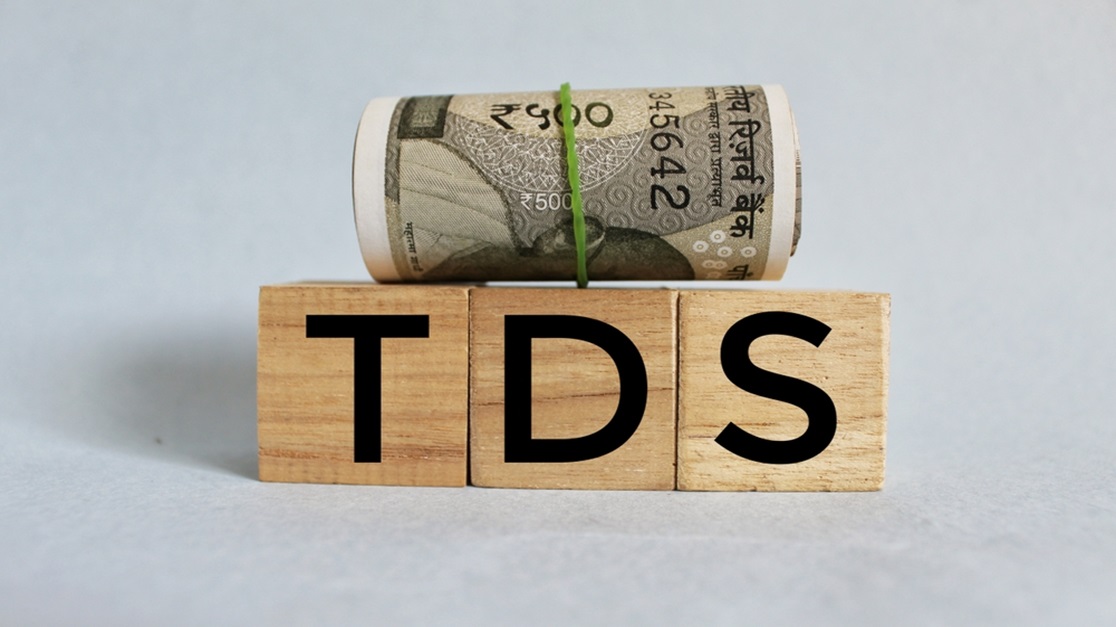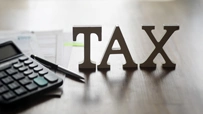Comprehensive Guide to TDS: Understanding Tax Deducted at Source
June 19, 2025

Are you aware of the recent reductions in the TDS (Tax Deducted at Source) rates for certain transactions? The Finance Bill has approved changes in TDS rates, which have led to lower rates from 5% to 2% for transactions falling under Section 194 IB. Well, what exactly is TDS and how does it impact your earnings?
If you're a salaried individual, you may have noticed that a portion of your income is deducted as tax before you receive it. This is called Tax Deducted at Source (TDS). Understanding TDS is crucial because it affects various aspects of your financial life, from investments to rental income. In this comprehensive guide, we will demystify TDS and explain how it works under the Income Tax Act. We'll cover everything from the basics of what TDS is to its implications for different types of income. By the end, you'll have a clear understanding of TDS and its role in tax deduction.
What is TDS?
TDS is a mechanism that allows the Government of India to collect taxes at the source of income. A certain percentage, as mandated in the Income Tax Act, 1961, is deducted from the source. The deducted amount is then remitted to the government on behalf of the recipient. TDS is applicable to various types of payments such as salaries, interest on fixed deposits, rent, professional fees, and more.
Process of Deduction and Payment of TDS
The Income Tax Act provides clear guidelines on the deduction and payment of TDS. Here's an overview of the process:
- TAN Registration: Entities responsible for deducting and remitting TDS are required to obtain a unique TAN (Tax Deduction and Collection Account Number) from the Income Tax Department.
- Determining Applicable Rates: The government sets specific rates for each type of payment subject to TDS. These rates can vary depending on various factors such as the nature of income and recipient's profile.
- Deduction and Remittance: The deductor is responsible for deducting the specified amount as TDS from the payment made to the recipient. The deducted amount should be remitted to the government within prescribed timelines.
- Issuing TDS Certificate: After deducting and remitting TDS, the deductor must issue a TDS certificate to the recipient as proof of tax deduction. This certificate contains details such as the deductor's name, PAN (Permanent Account Number), and TAN.
Implications of TDS on Different Types of Income
Let us now understand how tax deduction works for different income types.
1. Salary Income
TDS on salary is deducted by employers based on the individual's income slab and other exemptions claimed by the employee. The employer issues a Form 16, which provides details of the TDS deducted and enables employees to file their income tax returns. Your salary's TDS deduction rate will vary from 10% to 30% based on your tax slab.
2. Interest Income
Banks and financial institutions deduct TDS on interest earned from deposits at the following rates:
| TDS rate on Interest on Deposits for Residents | TDS rate on Interest on Deposits for Non-Residents | |
| Section | 194 A | 195 |
| Threshold | TDS shall not be deducted if interest income payable to customers does not exceed ₹50,000.
| No threshold. |
| TDS Rate | 10% | 30% plus surcharge and cess |
| TDS Rate in case payee does not provide PAN or PAN is inoperative | 20% | 30% plus surcharge and cess |
3. Rental Income
Section 194I is for persons who rent out their homes or sublet their properties. A person who is not an individual or a HUF is currently required to deduct TDS on rent if the total rent paid in a fiscal year is more than ₹2,40,000. However, if the payee fails to provide their Permanent Account Number (PAN), the TDS on rent is deducted at 20% under Section 206AA. If monthly rent exceeds ₹50,000, a person may deduct the TDS if they fall under the Individual or HUF category.
| Type | TDS Rate |
| Rent from plant and machinery, equipment | 2% |
Rent from land, building, and furniture | 10% |
4. Professional Fees or Technical Fees
Professionals such as doctors, lawyers, and consultants who receive professional fees, technical services offered to clients in the field of management and consulting, and royalty payments are subject to TDS. The payer deducts TDS at following rates if the total fees paid exceed ₹30,000 in a financial year.
| Type | TDS Rate |
| Technical Fees | 2% |
| Royalty | 10% |
| Professional Fees | 10% |
| If payee does not furnish PAN | 20% |
5. Cash Withdrawal
According to Section 194N of the Income Tax Act, banks must deduct tax from total cash withdrawals that exceed a certain limit as follows:
| TDS Rate | Persons who have not filed income tax returns for the past 3 years | Persons who have filed income tax returns for the past 3 years |
Threshold | ||
| Up to ₹20 lakhs | Nil | Nil |
| ₹20 lakhs to ₹1 crore | 2% | Nil |
| Above ₹1crore | 5% | 2% |
TDS on Fixed Deposit and Recurring Deposit Interest
As per the income tax rules, if your interest income pertaining to FD and/or RD exceeds ₹50,000 (₹1 lakh for senior citizens) in a financial year, a TDS of 10% would be deducted by the bank. That said, if your income is below the minimum tax slab, you can submit Form 15G (Form 15H for senior citizens) to the bank requesting them not to deduct TDS on the interest income.
Filing TDS Returns
Individuals or entities that deduct TDS are required to file quarterly returns detailing the amounts deducted and deposited. These returns must include:
- Tax Deduction and Collection Account Number (TAN)
- Total amount of TDS deducted
- Nature of payment
- Permanent Account Number (PAN) of deductees
Failure to comply with these requirements can lead to penalties and interest charges on unpaid amounts.
Due Dates for Deducting TDS
The due dates for deducting TDS depend on the nature of payment. Employers need to deduct TDS from employee salaries every month and deposit it with the government by the 7th of the following month. TDS on rent and sale of properties must be deposited by the 30th of the following month.
Claiming TDS Credit and Refunds
TDS deducted by employers or other entities is reflected in your Form 26AS, which serves as your tax credit statement. You can claim this TDS credit while filing your income tax return. If the TDS deducted exceeds your actual tax liability, you are eligible for a refund.
For instance, if Ravi's total tax liability is ₹50,000 and his employer deducts ₹60,000 as TDS during the year, he can claim a refund of ₹10,000 while filing his income tax return.
Final Thoughts
Understanding TDS is essential for maintaining financial discipline and ensuring compliance with tax regulations. By grasping the basics of TDS, you can effectively plan your finances and avoid any surprises during the tax filing season. Remember to keep track of your TDS deductions, claim the credit while filing your income tax return, and ensure that you meet your tax obligations.
If you're just starting out in your savings journey, opening a Savings Account with Ujjivan Small Finance Bank can be a good start. We have a wide variety of Savings Accounts catering to different financial needs - sign up for the one that meets your financial goals. Alternatively, you can browse through Ujjivan SFB product suite - our wide range of financial products are designed to make your financial life better.
Disclaimer:
The contents herein are only for informational purposes and generic in nature. The content does not amount to an offer, invitation or solicitation of any kind to buy or sell, and are not intended to create any legal rights or obligations. This information is subject to updation, completion, amendment and verification without notice. The contents herein are also subject to other product-specific terms and conditions, as well as any applicable third-party terms and conditions, for which Ujjivan Small Finance Bank assumes no responsibility or liability.
Nothing contained herein is intended to constitute financial, investment, legal, tax, or any other professional advice or opinion. Please obtain professional advice before making investment or any other decisions. Any investment decisions that may be made by the you shall be at your own sole discretion, independent analysis and evaluation of the risks involved. The use of any information set out in this document is entirely at the user’s own risk. Ujjivan Small Finance Bank Limited makes no representation or warranty, express or implied, as to the accuracy and completeness for any information herein. The Bank disclaims any and all liability for any loss or damage (direct, indirect, consequential, or otherwise) incurred by you due to use of or due to investment, product application decisions made by you on the basis of the contents herein. While the information is prepared in good faith from sources deemed reliable (including public sources), the Bank disclaims any liability with respect to accuracy of information or any error or omission or any loss or damage incurred by anyone in reliance on the contents herein, in any manner whatsoever.
To know more about Ujjivan Small Finance Bank Products Visit:"https://www.ujjivansfb.in"
All intellectual property rights, including copyrights, trademarks, and other proprietary rights, pertaining to the content and materials displayed herein, belong
to Ujjivan Small Finance Bank Limited or its licensors. Unauthorised use or misuse of any intellectual property, or other content displayed herein is strictly prohibited and the same is not intended for distribution to, or use by, any person in any jurisdiction where such distribution or use would (by reason of that person’s nationality, residence or otherwise) be contrary to law or registration or would subject Ujjivan Small Finance Bank Limited or its affiliates to any licensing or registration requirements.
FAQs
1. What is TDS?
For quick and efficient collection of taxes, the Income-tax Law has incorporated a system of deduction of tax at the point of generation of income. This system is called as “Tax Deducted at Source”, commonly known as TDS. Under this system tax is deducted at the origin of the income.
2. What are the payments covered under TDS as far as banks are concerned?
Recipient Resident: 194A - Interest other than interest in securities (only RD & FD, SB interest is not clubbed for TDS);
Non Resident : 195 - Interest other than interest in securities (applicable on RD/FD/SB interest)
Resident: 194N - TDS on cash withdrawals
3. Is there any minimum amount up to which tax is not deducted?
The Income-tax Act has prescribed a different threshold limit for deduction of tax at source under various sections. If the expenditure incurred/payment made during the year is below the threshold limit, then there is no requirement to deduct tax at source.
4. Can the Customer request the bank not to deduct TDS and pay the amount without deduction of Tax at source?
The customer can approach to the bank for non-deduction of tax at source but for that they have to furnish a declaration in Form No. 15G/15H, as the case may be, to the payer to the effect that the tax on his estimated total income of the previous year after including the income on which tax is to be deducted will be nil. Form No. 15G is for the individual or a person (other than company or firm) and Form No. 15H is for senior citizens. If customer has inoperative PAN (PAN not linked with Aadhaar), 15G/H exemption is not available. Also, 15G/H shall not be accepted in the case of NRO A/C holders.
5. If the bank does not deduct TDS, will the customer face any adverse consequences by means of action taken by Income Tax Department?
It is the duty and responsibility of the bank to deduct tax at source. If the bank fails to deduct tax at source, then the payee will not have to face any adverse consequences. However, in such a case, the payee will have to discharge his tax liability. Thus, failure of the bank to deduct tax at source will not relieve the payee from payment of tax on his income.
6. How will the customer know the quantum of TDS cut by bank from the sums paid to them?
To know the quantum of the tax deducted by the bank, customer can ask the bank to furnish a TDS certificate in respect of tax deducted by bank. Customer can also check Form 26AS from their e-filing account at https://www.incometax.gov.in/iec/foportal. They can also use the “View Your Tax Credit” facility available at www.incometaxindia.gov.in
7. At what rate will the bank deduct tax if a customer does not furnish PAN to the bank?
As per section 206AA, if the customer does not furnish your Permanent Account Number to the payer (i.e., deductor), then the deductor shall deduct tax at the higher of the following rates:
1. At the rate specified in the relevant provision of the Act.
2. At the rate or rates in force, i.e., the rate prescribed in the Finance Act.
3. At the rate of 20%.
8. What is the difference between PAN and TAN?
PAN stands for Permanent Account Number and TAN stands for Tax Deduction Account Number. TAN is to be obtained by the person responsible to deduct tax, i.e., the deductor. In all the documents relating to TDS and all the correspondence with the Income-tax Department relating to TDS one has to quote his TAN. PAN cannot be used for TAN, hence, the deductor has to obtain TAN, even if he holds PAN.
9. Is PAN mandatory?
The Finance Act (2) of 2009 makes PAN compulsory in case of TDS eligible payments. Failing that, the deductor will be paying TDS at a higher rate. If PAN is not submitted, the bank has to deduct TDS at 20% and customer cannot claim the TDS. In fact, it will not reflect in customer 26AS/AIS. PAN of the deductor has to be given by non-government deductor. It is essential to quote PAN of all deductee failing which credit of tax deducted will not be given.
10. If a customer does not have PAN, can he/she furnish 15G/15H for non-deduction of TDS from interest?
As per section 206AA, a declaration in Form No. 15G or Form No. 15H is not a valid declaration, if it does not contain PAN of the person making the declaration. If the declaration is without the PAN, then tax is to be deducted at higher of following rates as follows:
i. At the rate specified in the relevant provision of the Act.
ii. At the rate or rates in force, i.e., the rate prescribed in the Finance Act.
iii. At the rate of 20%
Latest Blogs

Dussehra 2025: How to Win Your Financial Battles with Smart Saving
Dussehra 2025 (also known as Vijayadashami) falls on Thursday, October 2, 2025.

eSIM Scam in India: I4C Warns Mobile Users About Rising Fraud – How to Stay Safe
The Indian Cybercrime Coordination Centre (I4C), a wing of the Ministry of Home Affairs, issued a strong warning to mobile users about the rapid increase in eSIM fraud in India.

How to Link PAN with Aadhaar: Step-by-Step Guide & Consequences of Not Linking
Linking your Permanent Account Number (PAN) with your Aadhaar is no longer just a best practice.

Annual Information Statement (AIS): A Complete Guide for Stress-Free ITR Filing
India’s tax season is in its final stretch.

ITR-1 (Sahaj) Restrictions: Income Sources Not Allowed & Filing Rules
With just a few days left before the 15 September 2025 deadline for filing Income Tax Returns (ITRs) for Assessment Year (AY) 2025-26, many taxpayers are rushing to submit their forms online.





